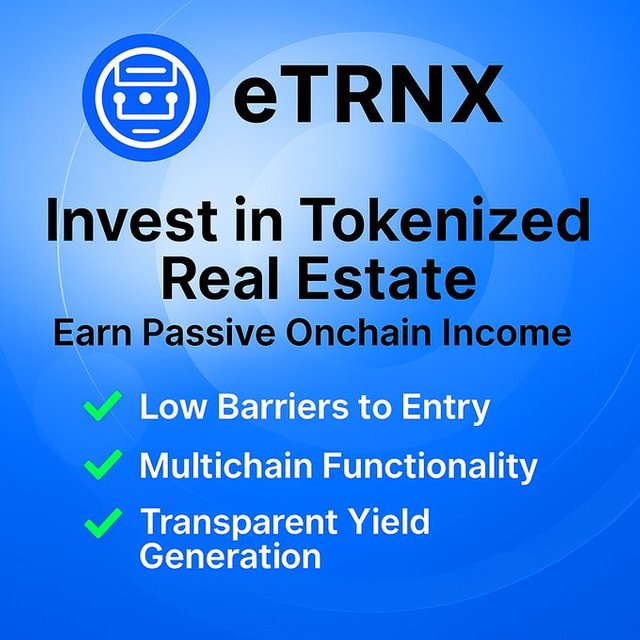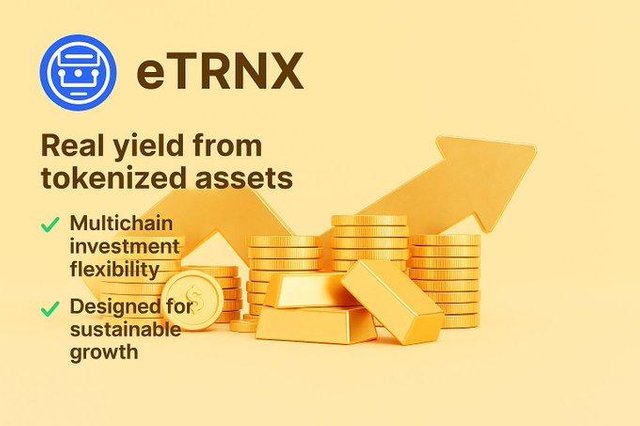Navigating the Challenges: eTRNX and the Intersection of AI and Blockchain-Based Finance
What Challenges Might ETRNX Face In Implementing Advanced Ai Features
eTRNX, while pioneering in its integration of advanced AI with blockchain-based finance, is likely to encounter a range of challenges as it scales and refines its platform. These challenges are common to projects at the intersection of artificial intelligence and decentralized finance, and understanding them is key to sustainable growth.
Key Challenges for eTRNX in Implementing Advanced AI Features
1. Scalability and Performance
- Blockchain Scalability: Blockchain networks, including Tron, can face bottlenecks as transaction volumes grow, potentially slowing down real-time AI data processing and analysis.
- AI Data Processing: Advanced AI models require large, high-quality datasets and significant computational resources. The inherent limitations of blockchain—such as slower data retrieval and immutable data structures—can constrain the speed and flexibility of AI operations.
2. Data Privacy and Security
- Privacy Concerns: DeFi platforms emphasize user privacy and data sovereignty, but AI systems need access to data for training and decision-making. Striking a balance between privacy and AI effectiveness is complex[2][5].
- Cybersecurity Risks: AI-powered platforms must guard against new attack vectors and ensure robust encryption, real-time threat detection, and regular vulnerability assessments to maintain user trust.
3. Regulatory and Compliance Hurdles
- Evolving Regulations: The regulatory landscape for both AI and DeFi is rapidly changing. eTRNX must navigate differing KYC, AML, and data protection laws across multiple jurisdictions.
- Transparency Requirements: Regulators and users increasingly demand explainability in AI decision-making, especially in finance, where “black box” models can undermine trust.
4. Technical Integration and Interoperability
- Architectural Mismatch: Blockchain’s decentralized, immutable architecture contrasts with the centralized, data-intensive needs of AI. Bridging these architectures requires innovative engineering and can introduce complexity and inefficiency.
- Interoperability: The fragmented blockchain ecosystem means eTRNX’s AI features must be compatible with multiple protocols and standards, which can be technically challenging.
5. Skill and Resource Gaps
- Specialized Talent: Successfully integrating AI with blockchain demands expertise in both fields, which is rare and expensive to acquire.
- Development Costs: Building and maintaining advanced AI features on a blockchain platform can be resource-intensive, especially for smaller teams or startups.
6. Data Quality and Availability
- Insufficient or Low-Quality Data: AI models rely on large, high-quality datasets. In DeFi, data may be fragmented, incomplete, or inconsistent, leading to inaccurate insights and poor model performance.
- Data Structure Limitations: Blockchain’s immutable nature can make it difficult to adapt to the evolving data needs of AI, limiting the flexibility required for advanced analytics.
7. Explainability and Trust
- Explainable AI: Users and regulators need to understand how AI-driven decisions are made. “Black box” AI models can erode trust if their logic is opaque to users.
- Bias and Fairness: Ensuring that AI models are trained on unbiased, representative data and produce fair outcomes is critical, especially in financial services.
eTRNX Tokenomics: Supporting Financial Inclusion
eTRNX’s tokenomics are carefully structured to foster participation, encourage long-term engagement, and support the platform’s mission of financial inclusion across developing regions.
Token Supply and Distribution
- Total Supply: The eTRNX ecosystem is governed by a fixed supply of 2 billion tokens.
- Initial Circulation: Only a small fraction (1 million tokens) is available at launch, with the remainder released gradually through staking rewards, ecosystem incentives, and strategic initiatives.
- Staking Pool: A dedicated portion of the total supply (10%) is allocated to staking rewards, ensuring that users who participate in network security and governance are consistently rewarded.
Incentives and Governance
- Staking Rewards: Users can stake their eTRNX tokens to earn passive income, with annual percentage yields (APY) reaching up to 30%. This incentivizes users to hold and actively participate in the ecosystem.
- Deflationary Mechanisms: The tokenomics model is designed to reduce circulating supply over time, increasing scarcity and potentially enhancing the value of each token.
- Community Governance: Token holders have voting rights, allowing them to propose and vote on platform upgrades, treasury allocations, and other key decisions. Each token represents one vote, ensuring a decentralized and democratic governance structure.
Utility in the Ecosystem
- Transaction Fees: eTRNX tokens are used to pay for all transactions on the platform, with fees kept extremely low to accommodate users in regions with limited financial resources.
- Access to Financial Products: Tokens provide access to a range of DeFi products, including tokenized real estate and money market funds, enabling users to invest small amounts and earn returns.
- AI-Enhanced Services: Token holders benefit from automated, AI-driven investment strategies, risk management, and personalized financial recommendations, making advanced financial tools accessible to everyone.
Liquidity and Cross-Chain Support
- Liquidity Management: The platform employs real-time analytics and dynamic reward distribution to maintain healthy liquidity pools and ensure fair access to incentives.
- Multi-Chain Interoperability: eTRNX is designed to operate across multiple blockchain networks, supporting fast, low-cost, and borderless transactions for users in Africa, Asia, and the Middle East.
Summary Table: eTRNX Tokenomics
| Feature | Description |
|---|---|
| Total Supply | 2 billion |
| Circulating Supply | 1 million (initial), rest unlocked via staking and incentives |
| Staking Allocation | 10% of total supply |
| Staking Rewards | Up to 30% APY |
| Governance | 1 token = 1 vote |
| Transaction Fees | As low as $0.000005 per transaction |
| Utility | Access to tokenized REITs, money market funds, AI-powered investing |
| Liquidity Management | Real-time analytics and balanced reward distribution |
| Cross-Chain Support | Tron, Stellar, Solana |
Conclusion
eTRNX’s ambition to leverage advanced AI for financial inclusion is both promising and ambitious. However, the platform must navigate significant technical, regulatory, and operational challenges—ranging from scalability and data privacy to regulatory compliance and explainability. Addressing these hurdles will be essential for building a secure, trustworthy, and truly transformative financial ecosystem.
For learn more:
Website: https://etronnetwork.org/
Twitter: https://x.com/eTRNXOFFICIAL
Telegram: https://t.me/etrnx01
Instagram: https://www.instagram.com/etrnx01/
Author:
Username : Evelynsant0saraujo
Profile link : https://bitcointalk.org/index.php?action=profile;u=3401831
wallet: TDYJCWupNXkqR99XFZFYCJNR85nNUKei1Q

